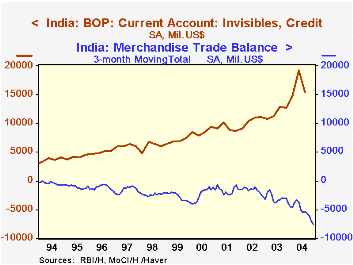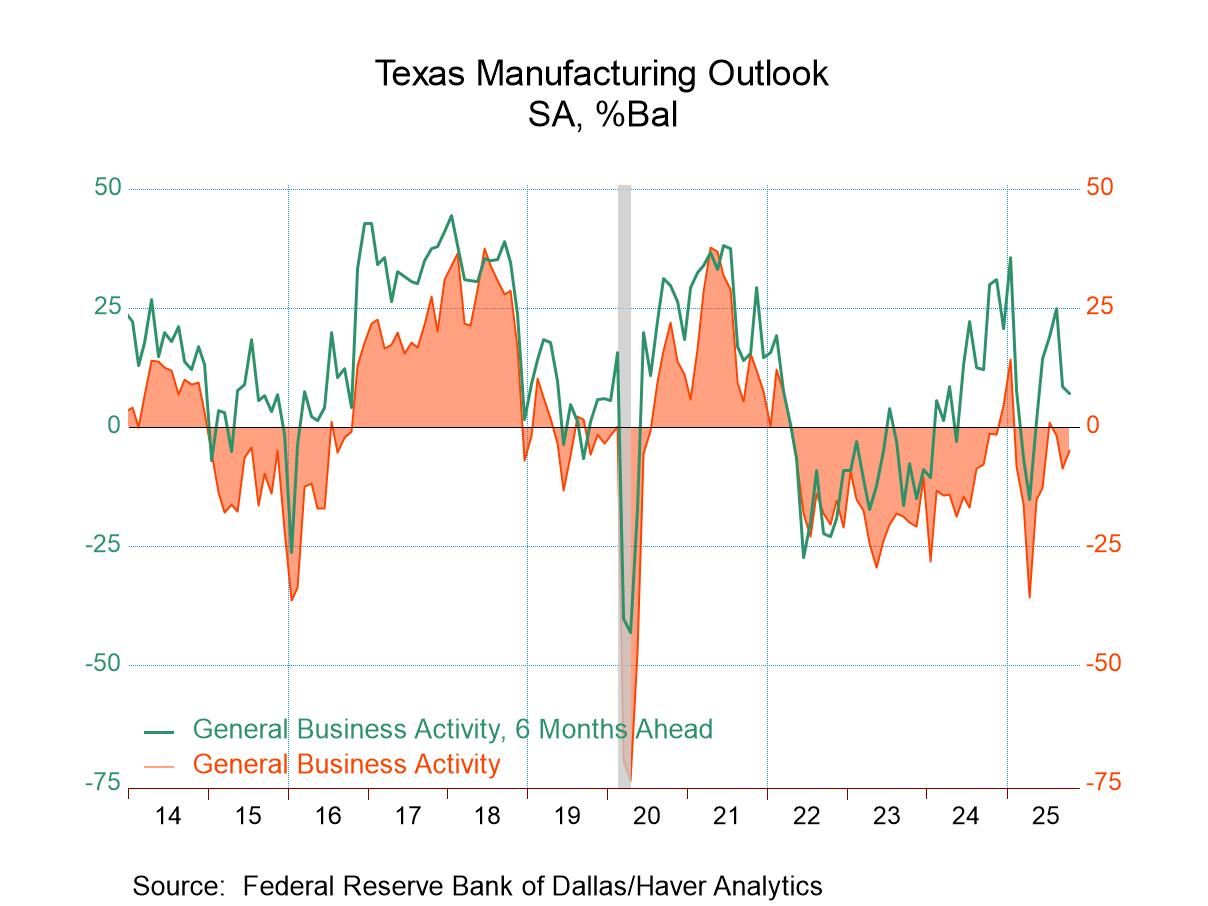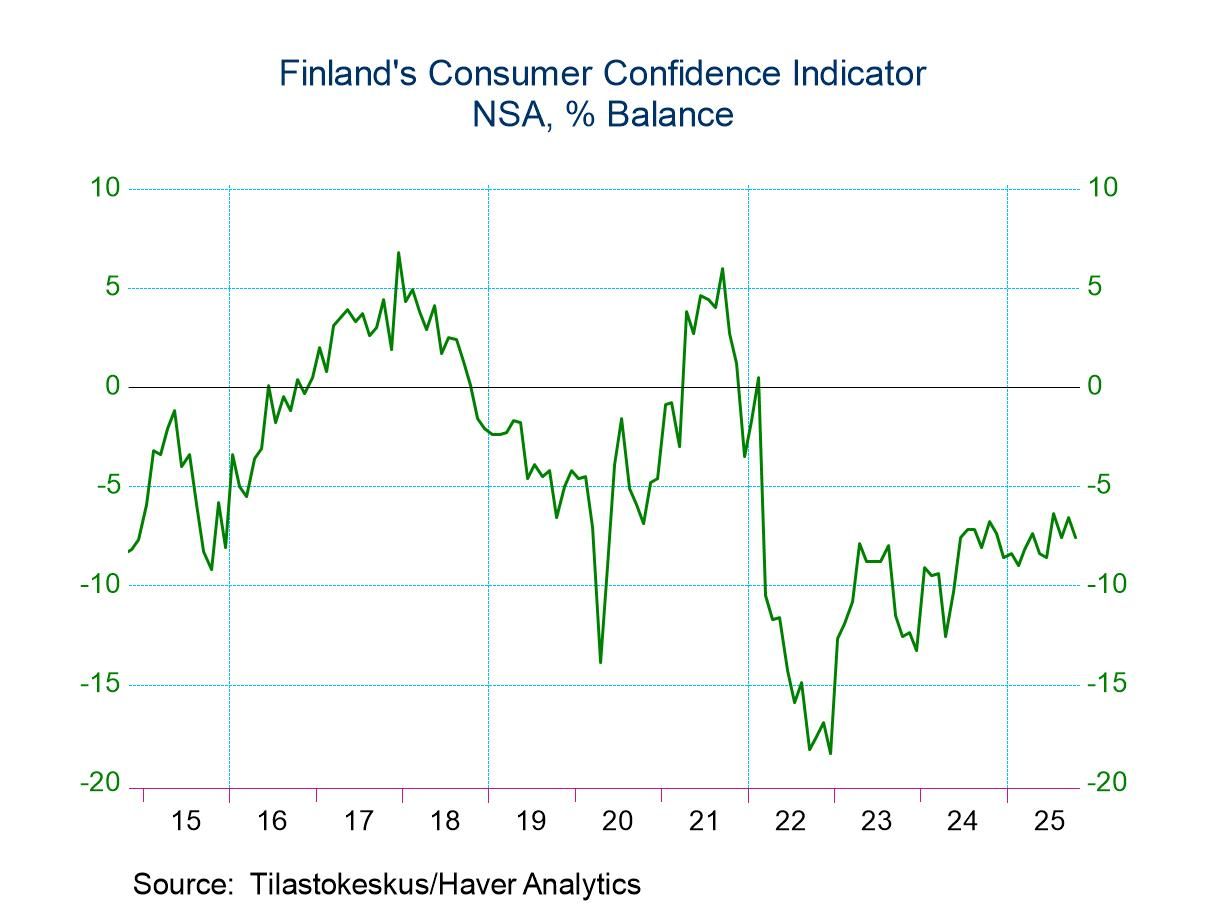 Global| Feb 03 2005
Global| Feb 03 2005India's Trade Deficit Widens, but So Does Its Surplus on "Invisibles"
Summary
Some months ago, we wondered here how it was that the well known practice of international companies "outsourcing" production to India should be accompanied by a trade deficit for the nation. Further, as 2004 wore on, this trade [...]

Some months ago, we wondered here how it was that the well known practice of international companies "outsourcing" production to India should be accompanied by a trade deficit for the nation. Further, as 2004 wore on, this trade deficit only got larger, reaching a record $22.0 billion for the year as a whole. The monthly trade figures, released for December during the last 24 hours, along with balance of payments data through Q3, supply some answers to this query.
First, as in many places around the world, the value of petroleum imports has increased, with rupee data converted to dollars showing a whopping 39% advance in 2004 over 2003. But this is only a partial explanation, as non-petroleum imports themselves surged 29%, smaller than for petroleum, to be sure, but still large in an absolute sense.
The Ministry of Commerce and Industry, source of these monthly trade figures, reports detail for select major commodities. Through September, those details show steep advances in chemicals, steel and machinery; in fact, steel imports were already larger in the first nine months of 2004 than in all of 2003. Gains in such categories might indicate expanding investment and would hardly be a cause for concern over rising imports.
Finally, other accounts in the balance of payments data are really the place to look for the impact of "outsourcing". This phenomenon occurs mainly in service functions. So, as seen in the chart, "credits" in the "invisibles" accounts have been very strong through Q3; the first three quarters of 2004 are up 42% from the comparable year-earlier span. And the surplus on invisibles, expressed on an annualized basis, increased almost enough to offset the year's increase in the trade deficit. Thus, India's trade and balance of payments situation is a complex one, highlighting the diversity of its rapidly developing economy.
| Billions of US$ | Dec 2004 | Nov 2004 | Dec 2003 | 2004 | 2003 | 2002 |
|---|---|---|---|---|---|---|
| Trade Balance | -2.94 | -2.32 | -1.61 | -22.03 | -12.38 | -7.00 |
| Exports of Goods | 6.75 | 6.83 | 5.90 | 73.48 | 58.81 | 49.53 |
| Imports of Goods | 9.69 | 9.15 | 7.51 | 95.51 | 71.19 | 56.53 |
| Imports of Petroleum* | 1.57 | 2.92 | 1.92 | 27.26 | 19.62 | 16.05 |
| 3Q 2004 | 2Q 2004 | 3Q 2003 | ||||
| Invisibles Balance | 6.35 | 9.42 | 6.29 | 30.29* | 22.33 | 16.89 |
| Invisibles Credits | 15.49 | 19.29 | 12.89 | 66.21* | 47.71 | 41.64 |
| Invisibles Debits | 9.14 | 9.87 | 6.59 | 35.92* | 25.38 | 24.76 |
Carol Stone, CBE
AuthorMore in Author Profile »Carol Stone, CBE came to Haver Analytics in 2003 following more than 35 years as a financial market economist at major Wall Street financial institutions, most especially Merrill Lynch and Nomura Securities. She had broad experience in analysis and forecasting of flow-of-funds accounts, the federal budget and Federal Reserve operations. At Nomura Securities, among other duties, she developed various indicator forecasting tools and edited a daily global publication produced in London and New York for readers in Tokyo. At Haver Analytics, Carol was a member of the Research Department, aiding database managers with research and documentation efforts, as well as posting commentary on select economic reports. In addition, she conducted Ways-of-the-World, a blog on economic issues for an Episcopal-Church-affiliated website, The Geranium Farm. During her career, Carol served as an officer of the Money Marketeers and the Downtown Economists Club. She had a PhD from NYU's Stern School of Business. She lived in Brooklyn, New York, and had a weekend home on Long Island.





